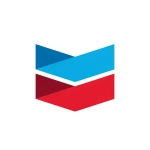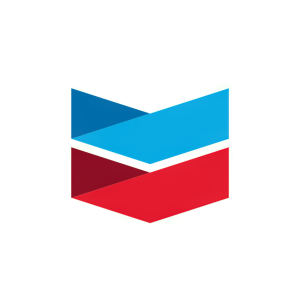Welcome to our dedicated page for Chevron news (Ticker: CVX), a resource for investors and traders seeking the latest updates and insights on Chevron stock.
Chevron Corporation (CVX) delivers essential energy resources through global upstream exploration and downstream refining operations. This centralized news repository provides investors and industry professionals with direct access to official announcements and market-moving developments.
Track Chevron's operational milestones through earnings reports, partnership announcements, and technology initiatives. Our curated collection features press releases on exploration projects, refinery expansions, and sustainability efforts without promotional bias.
Discover updates spanning Chevron's core oil and gas operations alongside emerging energy ventures. Content categories focus on financial disclosures, joint venture formations, operational efficiencies, and regulatory compliance matters relevant to energy sector stakeholders.
Bookmark this page for streamlined access to Chevron's evolving business narrative. Return regularly to monitor strategic decisions shaping one of the world's most integrated energy enterprises.
Chevron (NYSE: CVX) has announced the sale of a 70% interest in its East Texas gas assets to TG Natural Resources (TGNR) for $525 million. The deal includes $75 million in cash and $450 million as a capital carry for Haynesville development. Chevron will maintain a 30% non-operated working interest and an overriding royalty interest in the joint venture.
The transaction is expected to generate over $1.2 billion in value at current Henry Hub prices through the multi-year capital carry, retained working interest, and royalty interest. This sale aligns with Chevron's strategy to divest $10-15 billion in assets by 2028 to optimize its global energy portfolio.
Chevron (NYSE: CVX) has announced that CFO Eimear Bonner will participate in the Piper Sandler 25th Annual Energy Conference on March 18, 2025, at 11:00 AM ET. The presentation will focus on corporate strategy and Chevron's commitment to delivering higher returns, lower carbon, and superior shareholder value.
The event will feature a live webcast and Q&A session accessible via www.chevron.com/investors, with a replay available afterward. As a leading integrated energy company, Chevron aims to:
- Grow its oil and gas business
- Lower carbon intensity of operations
- Expand into renewable fuels
- Develop carbon capture and offsets
- Advance hydrogen initiatives
- Enhance power generation for data centers
- Explore emerging technologies
Brightmark RNG Holdings , a joint venture between Chevron U.S.A. Inc. and Brightmark Fund Holdings , has announced first gas delivery at 10 new renewable natural gas (RNG) projects across the Midwest. This expansion makes Brightmark one of the leading dairy RNG providers in the U.S., now operating 15 RNG projects in the region that generates 43% of the nation's agricultural products.
The company has achieved a reduction of over 1.2 million tons of CO₂eq through its RNG circularity centers, equivalent to carbon sequestered by 20 million trees over 10 years. The process involves collaborating with farmers to produce RNG through anaerobic digestion, collecting organic waste and upgrading it into transportation fuel.
Chevron (NYSE: CVX) has announced significant organizational restructuring and senior leadership changes aimed at improving operational efficiency and competitiveness. The company will consolidate its Oil, Products & Gas organization into two main segments: Upstream and Downstream, Midstream & Chemicals.
Key appointments include Clay Neff as president of Upstream and Bruce Niemeyer as president of Shale & Tight, both effective July 1, 2025. Andy Walz will continue leading the Downstream, Midstream & Chemicals organization. Additionally, Ryder Booth has been named vice president of Technology, Projects & Execution, while Balaji Krishnamurthy will become president of Australia.
The restructuring aims to drive value through greater standardization across operations, enhance execution speed, and strengthen long-term competitiveness. The Upstream model will focus on Shale & Tight, Base Assets & Emerging Countries, Offshore, Eurasia, and Australia operations.
Chevron (CVX) reported Q4 2024 earnings of $3.2 billion ($1.84 per share), compared to $2.3 billion ($1.22 per share) in Q4 2023. Adjusted earnings were $3.6 billion ($2.06 per share), down from $6.5 billion ($3.45 per share) in Q4 2023.
The company achieved record production levels in 2024, with worldwide and U.S. production increasing by 7% and 19% respectively. Notable operational highlights include the start-up of the high-pressure Anchor project in the Gulf of America and completion of key projects in Kazakhstan.
Chevron returned a record $27 billion to shareholders in 2024, including $15.2 billion in share repurchases and $11.8 billion in dividends. The company announced a 5% increase in quarterly dividend to $1.71 per share. The company also completed strategic asset sales in Canada, Republic of Congo, and Alaska, while progressing with the Hess acquisition.
Chevron (CVX), Engine No. 1, and GE Vernova have announced a partnership to develop power solutions for U.S. data centers using natural gas. The joint venture aims to deliver up to 4 gigawatts (GW) of power capacity, equivalent to powering 3-3.5 million U.S. homes, with initial service targeted by the end of 2027.
The project, dubbed 'power foundries,' will utilize seven U.S.-made GE Vernova 7HA natural gas turbines and will be located in the U.S. Southeast, Midwest, and West regions. The power generation will initially bypass the existing transmission grid to avoid increasing electricity prices for consumers. The facilities will be designed with flexibility to integrate carbon capture and storage (capable of capturing >90% CO2) and renewable energy resources.
This initiative aims to support the growing demand for electricity in data centers, particularly for AI development, while creating thousands of jobs and contributing to U.S. reindustrialization.
Chevron (NYSE: CVX) has announced the start of oil production at its Future Growth Project (FGP) at the Tengiz oil field in Kazakhstan. The FGP, representing the field's third processing plant, is expected to increase production capacity by 260,000 barrels per day at full capacity, targeting a total output of one million barrels of oil equivalent per day.
This milestone follows the completion of the Wellhead Pressure Management Project (WPMP) in 2024. The combined FGP and WPMP projects have implemented significant infrastructure improvements, including five Frame 9 gas turbine generators, four large compression trains, a new centralized control center, and enhanced sour gas handling capabilities.
The Tengiz field, recognized as the world's deepest producing supergiant oil field, is operated by Tengizchevroil LLP, with ownership split between Chevron (50%), KazMunayGas (20%), ExxonMobil (25%), and Lukoil (5%).
Brightmark RNG Holdings , a joint venture between Chevron U.S.A. Inc. (NYSE: CVX) and Brightmark Fund Holdings , has announced the delivery of first gas at 10 renewable natural gas (RNG) projects across the Midwest. This milestone makes the company one of the leading dairy RNG providers in the United States, now operating 15 RNG projects in a region that generates nearly 43% of the nation's agricultural products.
The company's methane reduction process involves collaborating with farmers to produce RNG through anaerobic digestion, collecting organic waste and upgrading it into transportation fuel. To date, Brightmark has reduced emissions by more than 1.2 million tons of CO₂eq, equivalent to planting and growing nearly 20 million trees for 10 years.
Chevron (NYSE: CVX) has announced the appointment of Laura Lane as vice president and Chief Corporate Affairs Officer, effective February 1. Lane will oversee the company's government affairs, communications, and social investment activities from Houston, replacing Al Williams, who is retiring in April after 34 years of service.
Lane joins Chevron from UPS, where she served as EVP & chief corporate affairs and sustainability officer. Her experience includes senior positions at Citigroup and Time Warner, as well as government roles at the US Trade Representative office and as a Foreign Service Officer with the US Department of State. She holds degrees from Georgetown University and Loyola University Chicago.
Chevron (NYSE: CVX) has announced the commencement of oil production from the Whale semi-submersible platform in the deepwater U.S. Gulf of Mexico. Chevron owns a 40% working interest in the project, with Shell Offshore Inc. holding the majority 60% stake as operator.
This milestone follows Chevron's achievements in the region, including the high-pressure Anchor project and enhanced water injection operations at Jack/St. Malo and Tahiti facilities. The Whale project is expected to reach a peak production of 100,000 gross barrels of oil equivalent per day, with up to 15 wells in its initial development phase.
Located approximately 200 miles southwest of Houston on Alaminos Canyon Block 773, at a water depth exceeding 8,600 feet, the facility employs energy-efficient gas turbines and compression systems. This simplified design aims to deliver lower emissions, reduced costs, and improved returns, supporting Chevron's goal of reaching 300,000 net barrels of oil equivalent per day in the U.S. Gulf of Mexico by 2026.


